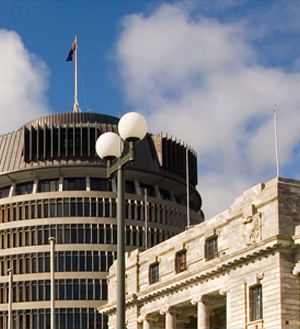US tariff announcements have created turmoil in the international markets and for cross-border commerce, with unheard of tariff rates announced, followed by retaliatory responses and a supposed flurry of negotiations. This article outlines the global tariff regime, recent developments and how it might impact you and your business.
Tariffs – Background
Tariffs are imposed on imported goods. The rationale is usually to protect local industries which might otherwise struggle to compete against offshore manufacturers able to undercut local prices. Where an exporter sells goods into New Zealand at a price lower than is available in their home jurisdiction, that exporter may be liable to dumping duties, designed to avoid that practice. Tariffs are calculated as a percentage of the ‘customs value’ of the goods (generally the transaction value subject to various adjustments).
The Tariff1, as published, is an enormous tome which classifies anything and everything and allocates both a reference code and the rate at which New Zealand would impose duty. Countries of origin may be classified as less developed countries, in which case, a concessionary lower rate of duty is imposed on importations.
New Zealand has, over time, lowered tariffs. Tariffs are now only imposed on a relatively narrow range of goods, usually at a rate of 5-10 per cent, payable by the ‘importer of record’.
Unlike GST charged on New Zealand imports, there is no tax credit available for commercial importers, so tariffs are a final cost either borne by the importer or passed on to consumers via price increases. Over the last half a century, New Zealand has sought to enter into free trade agreements whereby tariffs are reciprocally reduced.
Tariffs only apply to the import of goods as distinct from services or intangibles – unlike GST or the proposed digital service tax on intangibles (which remain unaffected for the time being).
In rare cases, a country might impose ‘secondary tariffs’ on imports. An example is the recent threat by the US that importers of Russian oil may find themselves exposed to 25-50 per cent tariffs on their unrelated imports into the US. Secondary tariffs may become an important consideration, even when there is no direct US connection.
Impact on New Zealand
The current proposals are that New Zealand goods imported into the US will be subject to a tariff rate of at least 10 per cent. This compares to China that faces tariffs as high as 245 per cent.
Some countries such as China have responded swiftly with reciprocal tariffs – mirror image tariffs that apply to the import of US goods into those countries. Others are taking time to negotiate a possible tariff reduction by offering various trade concessions.
Importantly, the rate of tariff depends on the “country of origin” rules which treat goods as originating from a certain country by reference to matters such as the proportion of labour or components used to create a product.
Simply exporting a good from New Zealand to the US does not guarantee the New Zealand tariff rate will apply. For example, it is conceivable that products manufactured in New Zealand from Chinese components could be treated as Chinese products when imported into the US. Even the transit of goods through a third country could have implications on the origin of those goods and whether free trade agreement concessions are available.
New Zealand has not proposed any reciprocal tariff increases on the US and is instead negotiating directly with it to improve New Zealand’s position. As such, for now, there are no tariff changes for goods imported into New Zealand. However, the situation in the future remains unclear.
Practical Implications
The outlook for worldwide tariffs and trade is uncertain, with a 90-day deferral applied to most of the proposed tariffs (including New Zealand). It is assumed that this will provide countries with time to negotiate improvements.
While New Zealand has relatively low tariffs imposed on US goods, there have been suggestions that our GST regime is itself a form of tariff which presents a trade barrier to US imports. This is an unusual view as GST is also a tax on domestic activity and many US states impose sales taxes which have some similarities to GST.
The proposed tariffs will be imposed on the ‘importer of record’, being the person importing the goods into the US. It will become even more important to review trade terms, especially to ascertain who is responsible for the burden of import duties, whether there is opportunity to amend prices in view of tariffs etc.
Some contracts may be at risk where a party has responsibility for sourcing components or products from overseas – for example, a US based construction project that requires Chinese components where pricing models have assumed low tariff rates.
While unlikely, it is possible that New Zealand imposes reciprocal tariffs, which would impact us as importers.
On a positive note, the minimum 10 per cent tariff for New Zealand product is relatively low compared to the rates proposed for some other countries so there may be a relative opportunity for New Zealand exporters. This may also serve as an impetus to drive other countries towards closer relations and new free trade agreements – for example, a possible agreement between New Zealand and India, with talks currently underway.
Going forward, any contracts with a cross-border element will need to be drafted with a keen awareness as to potential tariff changes and the responsibilities for each party – usually provided for by ‘Incoterm’ codes (for example – “Free on Board” or “FOB” where the supplier is responsible for all costs until goods pass onto the ship for carriage).
This situation is highly dynamic and has been changing with very little notice. The ultimate outcome is likely to have a pronounced effect on international trade and commerce.
If you need advice on the implications for your arrangements or proposed transactions, please get in touch with the contacts listed or your usual Bell Gully adviser.
Disclaimer: This publication is necessarily brief and general in nature. You should seek professional advice before taking any action in relation to the matters dealt with in this publication.











